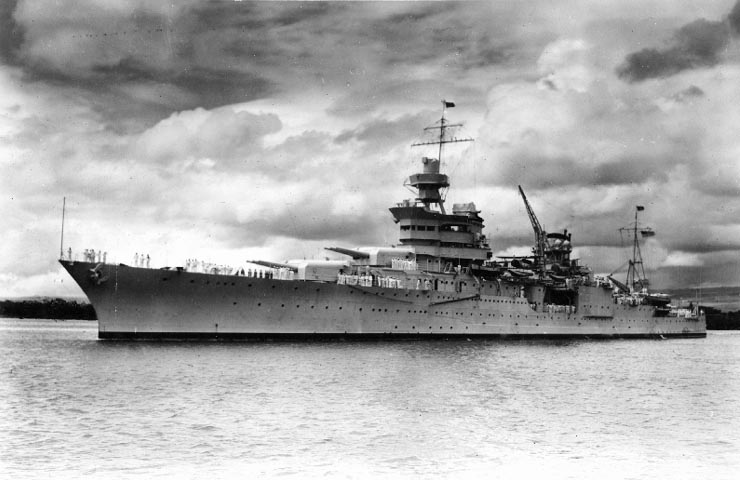This summer, Dr. Richard Hulver, a historian for Naval History and Heritage Command, discovered new information about the sinking of the World War II cruiser USS Indianapolis (CA 35).
The Indianapolis was on a secret mission near the end of the war. It was delivering components of the atomic bomb used in Hiroshima. Once it had delivered the components at Tinian in the Marianas Islands, the ship headed for Leyte in the Philippines. Before it reached that point, it was sunk by a Japanese torpedo just after midnight on July 30, 1945. About 800 of the 1,196 crew members survived the sinking, but only 316 survived the 4-5 days at sea, waiting for rescue.
Hulver found a blog post online that discussed a sailor that passed the Indianapolis less than a day before it sank. This fits with Capt. Charles McVay III’s testimony that he passed an unidentified tank landing ship (LST) about 11 hours before the attack.
Hulver was able to find the sailor’s records from the National Personnel Records Center. They showed that the sailor was a passenger on USS LST-779 when the Indianapolis sank. The LST-779’s deck logs corroborated the story.
This interaction between the two ships had gone unnoticed in previous studies about the Indianapolis.
“It’s obviously gratifying to find a part of the story that hasn’t been told – to discover a new part of an important episode in U.S. naval history,” Hulver said, “but more importantly, the Navy has an obligation to honor the sacrifice of those who serve. NHHC does this by expanding the body of knowledge about our Navy’s history.
“The LST-779 data sheds new light on where Indianapolis was attacked and sunk,” Hulver continued. “This brings us closer to discovering the final resting place of the ship and many of her crew. It has been humbling and an honor to learn more about the crew of Indianapolis and do my small part to ensure that their story lives on. I’m honored to [be] a part of that effort.”
In preparation for the 71st anniversary of the loss of the Indianapolis, Hulver prepared a report that has been included in a web site which consolidates all of the NHHC’s records on the ship. The site is an easy-to-navigate resource located at http://go.usa.gov/xr57m.
The collection also includes links to high-level intelligence that the crew was not made aware of due to operational concerns, information on rescue operations, records from the investigation into the sinking, the court martial of the captain, artwork, photos of the survivors, oral histories, and more. Historians continue to research the sinking, the US Navy reported in July this year.
The ship and crew served faithfully during the war. The Indianapolis often served as flagship for the 5th fleet. They earned ten battle stars. The crew successfully completed a secret mission that directly led to the end of the war. The loss of the Indianapolis led to changes in the reporting procedures for arrivals and non-arrivals of ships, established requirements for ships of a particular size to have an escort, and a reevaluation of lifesaving equipment on war ships.
The Naval History and Heritage Command is based in the Washington Navy Yard. It is responsible for the preservation, analysis, and distribution of U.S. naval history and heritage. It maintains historically relevant resources which are a reflection of the US Navy’s contributions throughout the history of the USA.
